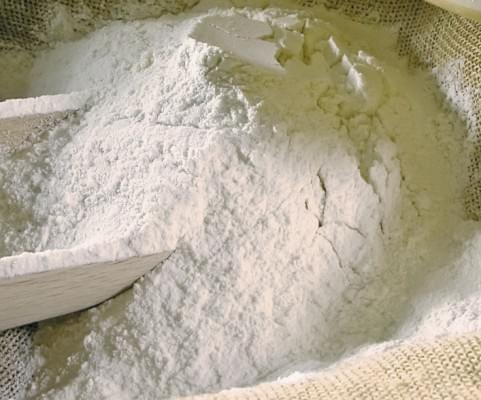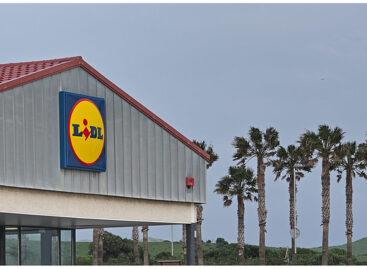Flour industry: between two millstones
It was with the privatisation wave of 1992 that the Hungarian milling industry’s concentration process started and it has been going on ever since.
The process later speeded up though, as 16 years ago there were still more than 100 active mills but there are only 52 in 2014 – which are operated by 41 milling industry enterprises. Still, the market is characterised by surplus capacity and actors are forced to operate with a 2-percent profit margin on average. It is a big problem that flour and baked good prices hardly follow – or don’t follow at all – the rising price of cereal crops. According to Zsófia Pótsa, general secretary of the Hungarian Grain and Seed Association (MGTKSZ), if one wants to shut down a mill, it is very difficult to do it without producing big deficit. At the moment only 60 percent of Hungarian mills’ capacity is being used. Only the country’s 10-12 modern mills utilise their full capacity. Modern mills are capable of making 78-80 milling percent of white flour from 100kg of wheat, while older mills can only come up with 73-75 percent products. The 10 major companies produce 80 percent of the flour in stores. Demand is biggest for mass products such as BL55 and BL80 flour. Hungarian consumers are used to baked goods being cheap. On the other hand, retail chains’ pricing policy also puts pressure on the flour industry. Typically retail chains work with 2 or 3 milling industry suppliers and make them compete against each other. Márta Szilágyi, president-CEO of Goodmills Magyarország Zrt. told our magazine that negative price competition not only reduces the profit of both retailers and wholesalers but also makes it impossible for mills to operate sustainably in the medium or long term. The flour market’s size doesn’t seem to change considerably from one year to another and key players agree that firms can only stay alive if they cut costs and offer good quality flour. Norbert Káhn, commercial director of Gyermelyi Zrt. opines that flour brands which make sure to offer constant quality will see their efforts bear fruit this year, when the quality of wheat harvested varies greatly. He also believes that vertical integrations – covering the whole product path from raw material production to end product – like Gyermelyi’s make flour industry enterprises less exposed to negative market trends and guarantee better quality. In the last ten years the company invested HUF 20 billion in building what they have now. MGTKSZ’s estimation is that the black market controls 25-30 percent of the flour industry. Suppliers that sell large quantities without paying the VAT can sell their products to retail chains much cheaper than milling industry companies. Since the level of VAT is very high at 27 percent, it is practically impossible for law-abiding companies to compete with those who cheat. In the case of 1kg of flour we can calculate with 18-20 forint of VAT and mills have to pay other taxes as well. The association’s view is that it would definitely improve the market situation if the government reduced the VAT on basic food products to 5 percent. Competition is fierce in the pasta market too. Pasta is made from TL-50 type premium flour, the price of which is rather static if compared with other flour types, so no price reduction can be expected in its case – we learned from László Sajcz, Mary-Ker Pasta Kft.’s marketing and commercial director. To make things worse, in the last few years the bargaining position of players in the sector worsened. On the surface the fight for consumers is going on between retail chains, but under the surface we can often see that a significant part of the costs have to be paid for by manufacturers. Fierce price competition requires flexibility, for instance because pastas made with egg kept losing their markets share in the last few years due to their prices being relatively higher than durum pastas’ – which already represent 10 percent of the market. János Puskás, export manager with Famíliatészta told us that the market is full of cheap products of dubious quality. Famíliatészta concentrates on innovation and in August introduces two completely new product groups to the Hungarian and European markets. Each year about 35,000 tons of rice is sold by retailers in Hungary and from this only 3,000-4,000 tons are produced by Hungary. Mihály Bencs, managing director of Riceland-Magyarország Kft. informed us that the market is heavily segmented: 70 percent of products is cheaper, lower-quality long-grain rice and medium- and premium-category products have the rest of the market. Branded products aren’t even present in the lower-price category and they focus on quality and product selection instead: for instance Riceland offers 40 products made from 20 different types of rice.
Related news
Related news
New HR assistant helps K&H employees
🎧 Hallgasd a cikket: Lejátszás Szünet Folytatás Leállítás Nyelv: Auto…
Read more >Lidl To Invest €600m In Spain, Targets 300 Stores In Portugal
🎧 Hallgasd a cikket: Lejátszás Szünet Folytatás Leállítás Nyelv: Auto…
Read more >KSH: industrial producer prices in November 2025 were on average 2.7 percent lower than a year earlier and 0.3 percent lower than the previous month’s prices
🎧 Hallgasd a cikket: Lejátszás Szünet Folytatás Leállítás Nyelv: Auto…
Read more >





